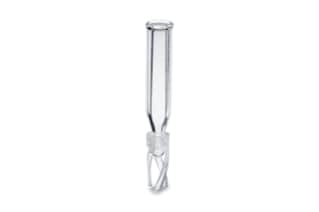
|
Includes |
Insert |
|
Sample Limited |
Sample Limited |
|
UNSPSC |
41121806 |
|
Application |
Sample Preparation |
|
Product Type |
Inserts |
|
Units per Package |
100 pk |
FAQs about Low-Volume Inserts
What is the volume capacity of the low-volume insert?
The low-volume insert has a volume capacity of 150 μL.
Can the low-volume insert be used with other vials or collection plates?
Yes, the low-volume insert is designed to fit into standard vials and collection plates, making it compatible with various laboratory equipment.
Is the plastic spring included with the low-volume insert?
Yes, the low-volume insert comes with a plastic spring, which helps to secure the sample and prevent leakage during handling and transportation.
Are the low-volume inserts made of a specific material?
The low-volume inserts are made of high-quality materials, ensuring chemical compatibility and minimizing sample contamination.
How many low-volume inserts are included in a pack?
Each pack of low-volume inserts contains 100 inserts, providing a sufficient quantity for multiple experiments or sample preparations.
What Can Be Done When There Are No Peaks, Small Peaks, Or Negative Peaks?
As a first troubleshooting step, check that the detector lamp is on. Often, a loose or broken wire between the detector and the integrator can result in the loss of small, negative peaks or no peaks at all. If the issue persists after these checks, make sure that the pump is on and that the flow is towards the column and not going to your waste. Another important thing to check is that the sample vial contains the correct sample and ensure that the sample has not deteriorated with time. Negative peaks usually appear when the sample solvent and mobile phase differ greatly in composition. In addition to this, the mobile phase might be more absorptive than sample components to the set UV wavelength.